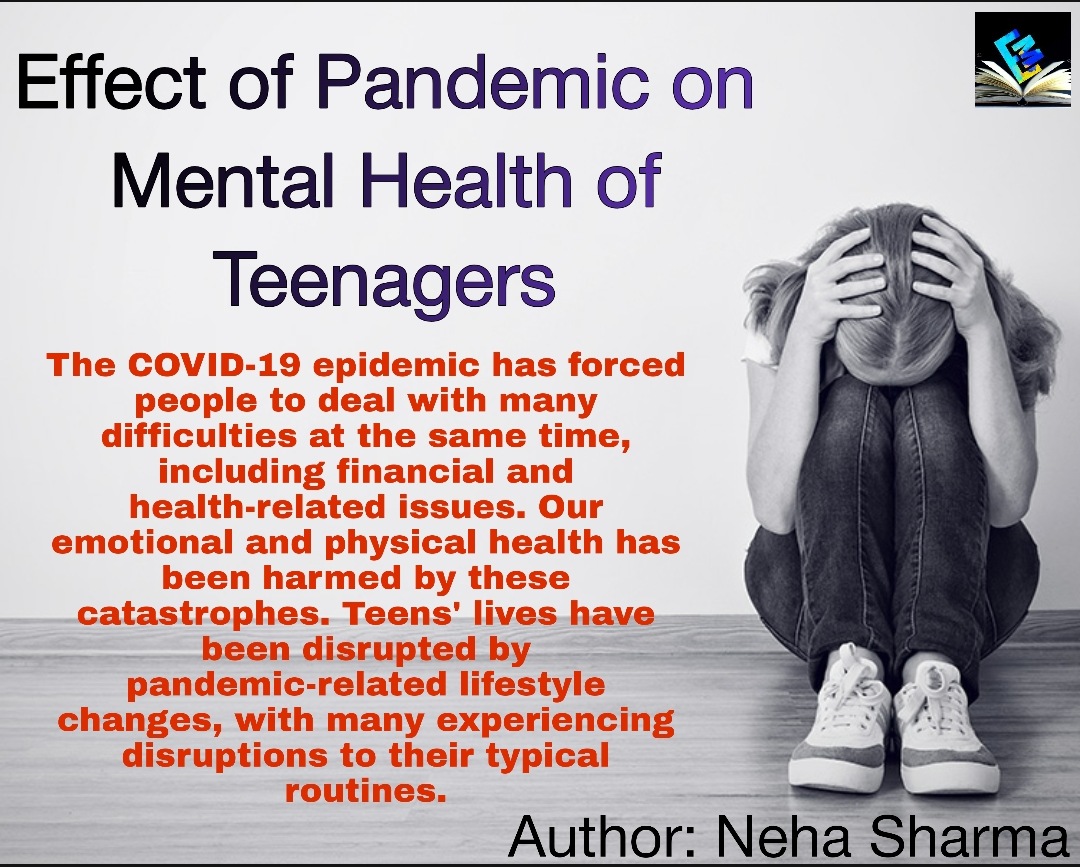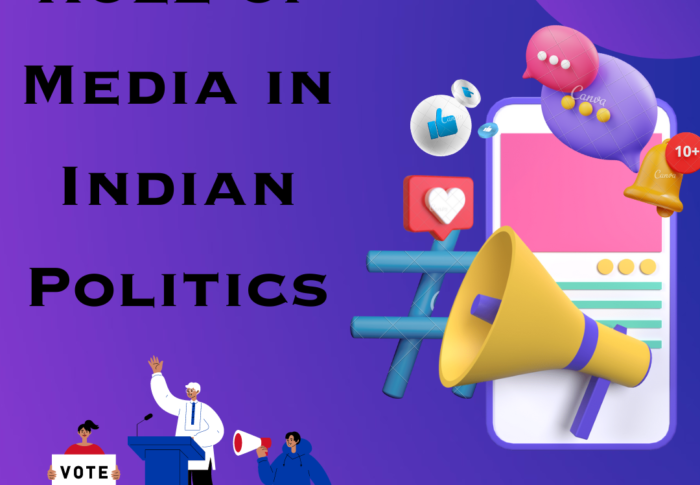
Effect of Pandemic on Mental Health of Teenagers
Author: Neha Sharma
The COVID-19 epidemic has forced people to deal with many difficulties at the same time, including financial and health-related issues. Our emotional and physical health has been harmed by these catastrophes. Teens’ lives have been disrupted by pandemic-related lifestyle changes, with many experiencing disruptions to their typical routines. Researchers discovered that from the onset of the epidemic, parents of teenagers have reported that their child has displayed indicators of a new or worsening mental health condition. The pandemic’s restrictions have been felt all around the country. Restrictions have resulted in months of virtual learning, more time away from friends, and the cancellation of crucial social activities like sports, school performances, graduations, and proms for teenagers.
Teens experienced Anxiety and Depression
Parents reported that the pandemic has harmed their children’s social ties, with 64 percent reporting that their children text, use social media (56 percent), play online games (43 percent), and talk on the phone (35 percent) every day or virtually every day. Anxiety and depression were found to be lower in urban settings than in rural locations. Fear, worry, and other emotions were higher among children in high-epidemic locations. Peer groups and social interactions are important aspects of adolescent development. During the pandemic, however, these options were restricted. Pre-lockdown learning for children and teenagers was mostly one-on-one engagement with mentors and peer groups around the world. Over 91 percent of the world’s student population has been significantly impacted by nationwide school and institution closures.
For long periods of time, the absence of a structured school setting causes disruption in routine, boredom, and a lack of fresh ideas for engaging in various academic and extracurricular activities. Because of the long-term change in their routine, these youngsters have grown to be more clinging, attention-seeking, and reliant on their parents. It’s expected that children would avoid returning to school once the lockdown is lifted, and that they will have trouble re-establishing contact with their mentors once the schools reopen. As a result, the restriction of their activity may have a long-term negative impact on their general psychological well-being. Worst of all, when schools are closed and legal and preventative services are unavailable, children are rarely in a position to report violence, abuse, or harm, especially if they live in abusive households.
Impact on children during Isolation and Quarantine
Infection with COVID-19 manifests itself variably in children and teenagers. Nonetheless, cases of infection in youngsters have been documented all across the world, resulting in children being isolated. Furthermore, a single parent or both parents are frequently afflicted and quarantined. Children are removed from their parents in either situation. Isolated children require extra care since they may be at risk of developing mental health issues as a result of the pain caused by parental separation.
Separation from key caregivers can make a child more susceptible and put their mental health in jeopardy. Separation from key caregivers might make a youngster susceptible and jeopardise his or her mental health development. Emotionally bottled-up distress can manifest itself in the form of emotional fear or outwardly manifested behaviour in children. They may feel alone or lonely because they lack the knowledge and maturity to comprehend the consequences of the present epidemic crisis in their small environment.
Role of Healthcare Workers in Pandemic towards Teenagers
The role of mental health care specialists, such as clinical psychologists, psychiatrists, and psychiatric social workers, is critical during times of extreme stress when the mental health of children and adolescents around the world is directly or indirectly damaged.
- In order to replace in-person examinations and interventions, telemental health compatibility is required. Providers of mental health services should strive to reach out to the broader populace. They must work to develop and disseminate audio-visual content about healthy parenting, mental health awareness, stigma reduction, mental health hygiene, health behaviour promotion, and psycho-educational material about children’s and adolescents’ mental health.
- The need for an integrated and innovative mental health care delivery is critical. Coordination with people who play a vital role in the mental health care of children and adolescents, such as parents, physicians, teachers, school counsellors, community volunteers, non-governmental organisations, police, and so on. It should be informed about the mental health problem and given brief training in basic psychological support and psychological first aid.
- Providing online training for teachers or developing materials for school teachers and counselors on mental health promotion, life skills training, parent coordination, and referral to mental health experts.
- Clinical psychologists should develop and implement tele-based or in-person short-term-focused behavioural interventions for the management of known conditions in children [e.g., ADHD, autism, intellectual disabilities] that are primarily parent-focused and initiated using digital and electronic media.
- Psychiatrists must carefully consider the dangers and advantages of psychotropic medications for children and adolescents, such as antidepressants, anxiolytics, anticonvulsants, and other medications, and, if possible, make arrangements for those who are unable to do so.
- Mental health professionals must conduct longitudinal and developmental studies on the short- and long-term mental health effects of the COVID 19 epidemic and lockdown on children and adolescents.
Despite the fact that the rate of COVID-19 infection among young children and adolescents is low, the stress they face makes their state extremely sensitive. The nature and scope of this impact are determined by a number of risk variables, including developmental age, educational status, pre-existing mental health conditions, being economically disadvantaged, and being isolated due to infection or fear of infection. Clinginess disrupted sleep, nightmares, poor appetite, inattentiveness, and substantial separation are all symptoms in young children, according to studies. Prevention, promotion, and interventions according to the public mental health system should be the focus of the healthcare system and policies in order to address the mental health requirements of the general public while taking regional contextual elements into account.
For any Query
Mail us at info@edumound.com






